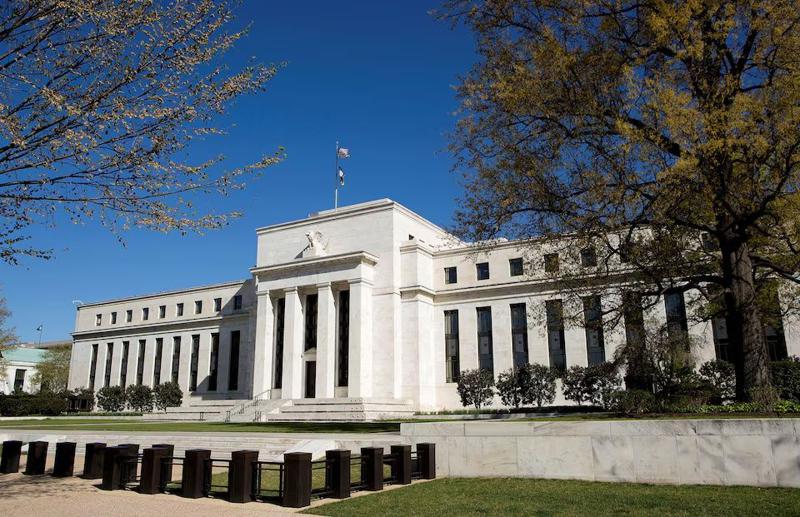
BIX ARTICLE
More Fed officials ready to say goodbye to low-rate world
May 02, 2024
|
6 min read
Featured Posts
Social Bonds Illustrative Use-Of-Proceeds Case Studies Coronavirus
Jul 06, 2020
|
2 min read
Sustainable Banking Network (SBN) Creating Green Bond Markets
Jul 06, 2020
|
2 min read
Why is Inflation Making a Big Comeback After Being Absent for Decades in the U.S.?
Mar 24, 2022
|
7 min read
SC issues Corporate Governance Strategic Priorities 2021-2023
Mar 29, 2022
|
3 min read
A growing number of Federal Reserve officials don't see a return to the ultra-low interest rates that prevailed before the COVID-19 pandemic due to everything from ballooning federal deficits to demand for investments in green energy, artificial intelligence and domestic manufacturing.
The U.S. economy has held up remarkably well in the face of the stiffest rate hikes in a generation, with unemployment low and growth - until recently - mostly above trend. Meanwhile progress on returning inflation to the Fed's 2% target has stalled out this year after rapid gains last year, leading some to wonder whether something has changed that could require a generally higher level of interest rates to keep price increases in check.
Initial evidence of a change in thinking among some Fed officials came at their March meeting, when policymakers' median estimate for the longer-run federal funds rate was nudged up to 2.6% from 2.5%, where it had largely resided since early 2019.
The heads of the Dallas and Cleveland regional Fed banks, for instance, sense something new is afoot.
Dallas Fed President Lorie Logan, speaking in April, noted seven policymakers saw a longer-run policy rate of 3%, up from three with that view a year ago.
Indeed, an upshift was evident among those still not ready to envision longer-term rates as high as that: Just one official in March estimated a longer-run rate below 2.5% versus five a year earlier.
Cleveland Fed President Loretta Mester, meanwhile, said last month she raised her longer-run fed funds estimate "to reflect the continued resilience in the economy despite high nominal interest rates and higher model-based estimates of the equilibrium interest rate, R-star."
To be sure, the shift seen in March's projections was small, and some like Fed Chair Jerome Powell cautioned against reading too much into it at this stage. Ahead of this week's policy meeting, which ends later on Wednesday, others have said it's far too soon to make a judgment on R-star and that the rate in any case is not central to the current debate.
STAR WARS
R-star is Fed speak for the neutral or natural rate of interest, the level of rates that neither propels nor restrains the economy and that should be in place while growth is expanding and inflation is low and stable.
Fed officials aren't the only ones wondering if it may be higher.
A New York Fed survey of major banks ahead of the March meeting found dealers estimating a longer-run rate of nearly 3%, up from 2.5% the prior March.
Analysts at TD Securities told clients in a recent note, "we continue to assume that the long-run nominal neutral rate is now likely 50 basis points higher at 2.75%-3.00%, but can't discount a somewhat higher level closer to 3.50%."
And the San Francisco Fed said in a report its in-house view on the longer-run rate stands at 2.75%.
A consensus on why R-Star might be rising is elusive.
"Ask 10 economists to get probably 20 answers,” the New York Fed's Roberto Perli, who manages the central bank's holdings of cash and bonds, said last month.
Logan in her April speech cited rising federal deficits that have expanded the supply of government bonds on the market, booming investment demand and perhaps the start of higher productivity growth as possible reasons. "All of these factors should raise the neutral rate, all else equal."
'R-SASQUATCH'
A higher R-Star can have both short- and long-term implications for monetary policy and may explain why the highest interest rates in roughly a quarter century haven't slowed the economy much, if at all. Over the longer run, a higher R-Star would signal persistently higher borrowing costs and better returns for savers.
It also means the Fed's rate would need to be higher, although that is not without some upsides, Charles Evans, who led the Chicago Fed from 2007 to 2023, said last month.
"You'd have more capacity to cut rates if you actually needed it," Evans said, and the Fed would be less likely to find the funds rate hitting the near-zero levels that prevailed for most of the decade before the pandemic.
Not everyone at the Fed is on board the higher R-star bandwagon, including Evans' successor.
"I started calling it R-Sasquatch because it's fundamentally not observable," Chicago Fed President Austan Goolsbee said last month.
"I'm mostly looking at the historical, recent historical, what's a real federal funds rate, that's kind of my indicator" for setting policy, Goolsbee said. "I'm a little impatient with the argument that you would see wild swings in long-run interest rates over a short-run period."
Fed Governor Christopher Waller, speaking in March, expressed skepticism as well.
"You have to explain to me why real rates on the safe liquid government debt fell for 40 years and why suddenly it turned around, and no one's really given a lot of very good answers," Waller said.
Meanwhile, New York Fed President John Williams, a leading researcher into the R-Star concept who has contended he expects a return to a low-rate world at some point, doesn't see the issue having much relevance for policymaking right now.
"I am not coming in any day of my life, and especially not in the days of the FOMC meeting, thinking my estimate of R-star is X and I've got some formula for what the interest rate should be," Williams told reporters last month. He added the concept is useful for broader thinking about the economy, but at the current point, thinking about it having shifted higher is "speculation." - Reuters
Source: More Fed officials ready to say goodbye to low-rate world (2024, 01 May). The Star. Retrieved from https://www.thestar.com.my/business/business-news/2024/05/01/more-fed-officials-ready-to-say-goodbye-to-low-rate-world
Disclaimer
The information provided in this report is of a general nature and has been prepared for information purposes only. It is not intended to constitute research or as advice for any investor. The information in this report is not and should not be construed or considered as an offer, recommendation or solicitation for investments. Investors are advised to make their own independent evaluation of the information contained in this report, consider their own individual investment objectives, financial situation and particular needs and should seek appropriate personalised financial advice from a qualified professional to suit individual circumstances and risk profile.
The information contained in this report is prepared from data believed to be correct and reliable at the time of issuance of this report. While every effort is made to ensure the information is up-to-date and correct, Bond and Sukuk Information Platform Sdn Bhd (“the Company”) does not make any guarantee, representation or warranty, express or implied, as to the adequacy, accuracy, completeness, reliability or fairness of any such information contained in this report and accordingly, neither the Company nor any of its affiliates nor its related persons shall not be liable in any manner whatsoever for any consequences (including but not limited to any direct, indirect or consequential losses, loss of profits and damages) of any reliance thereon or usage thereof.
YOU MAY ALSO LIKE
ARTICLE
Jan 05, 2026
|
7 min read
ARTICLE
Dec 23, 2025
|
5 min read
ARTICLE
Dec 22, 2025
|
6 min read
ARTICLE
Dec 18, 2025
|
7 min read



